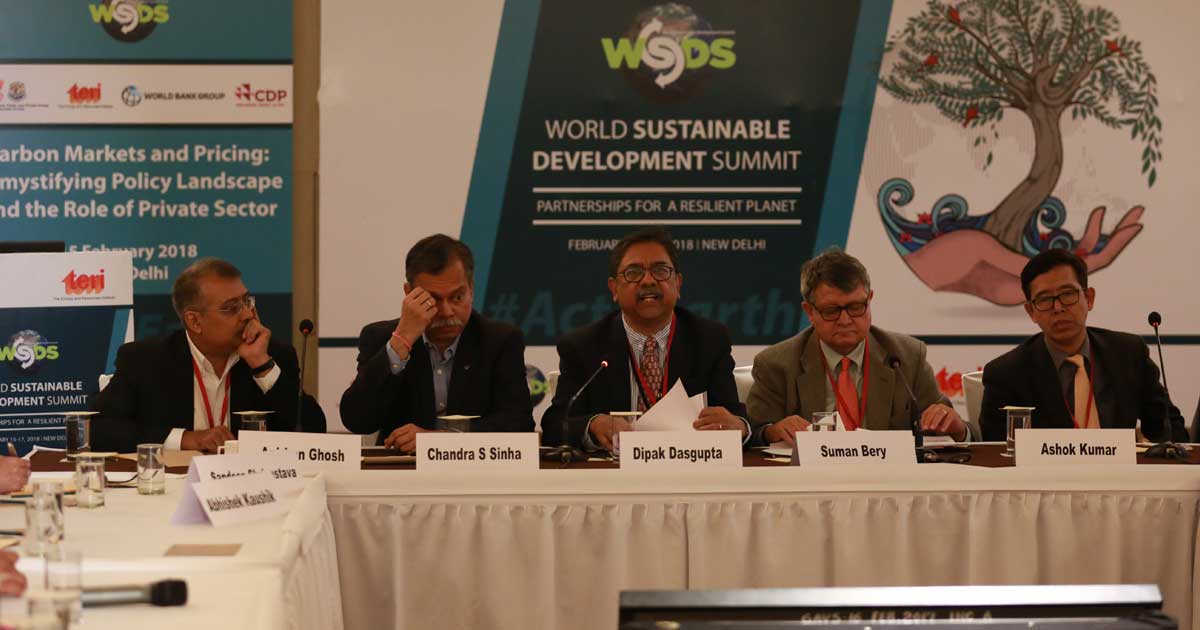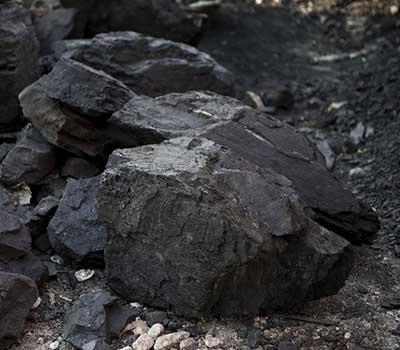
Carbon Pricing Is the Way Ahead
 Carbon pricing can generate resources for cleaning our environment, Dipak Dasgupta at WSDS 2018
Carbon pricing can generate resources for cleaning our environment, Dipak Dasgupta at WSDS 2018
Speaking in the session on carbon markets and pricing, Mr Dipak Dasgupta highlighted that India has taken several initiatives on the domestic front. Significant amongst these is the coal cess, which has largely been welcomed by the coal and power industry. Governments need massive resources for dealing with impacts of greenhouse gas emissions, he said.
Carbon pricing hits two birds with one stone—it puts a price on negative externalities of greenhouse gas (GHG) emissions and it generates resources for cleaning the environment. However, Mr Suman Bery felt that the opportunity cost of saving carbon in India is higher, hence there is a need for global optimization and richer countries need to play a bigger role.
According to Dr Chandra Shekhar Sinha of the World Bank, the prospects of carbon markets look much brighter today, as there will be greater participation of all countries who have to meet their NDCs and who are more likely to assess the costs and benefits of market-based mechanisms.
 A price on carbon: India's coal cess has gradually increased from Rs 50/tonne in 2010 to Rs 400/tonne
A price on carbon: India's coal cess has gradually increased from Rs 50/tonne in 2010 to Rs 400/tonne
Speaking about energy markets, Dr Ashok Kumar of the Bureau of Energy Efficiency (BEE) highlighted the huge success of the Perform Achieve Trade (PAT) programme in India which saw almost 90% compliance from industries. Mr Anirban Ghosh of Mahindra said taxes do help in nudging behaviours towards low-carbon pathways, hence they may be a preferred option over market-based mechanisms. He spoke about Mahindra’s own initiative of setting an internal carbon price of $10 per tonne of emission with a view to reducing their emissions by 25% over the next 3 years. He spoke about several of Mahindra’s initiatives that are influencing their customers to choose low-carbon options in the transport, buildings, and recycling sectors.
Mr Manish Mishra of Tata Steel said steel companies are constantly bringing down their carbon footprint through energy-efficiency measures. Echoing the same sentiments, Mr Sandeep Srivastva of Ambuja Cement pointed out that his company, too, has set an internal carbon price which it uses to systematically assess its balancing efforts to mitigate greenhouse emissions.
In his closing remarks, Mr Damandeep Singh of Carbon Disclosure Project said nearly 1,400 companies, globally, have factored an internal carbon price into their business plans. Of these, the largest number of companies come from China and Mexico, both countries which have made policy announcement for carbon markets. This, he said, is a positive indication for other governments to build the case for carbon markets.